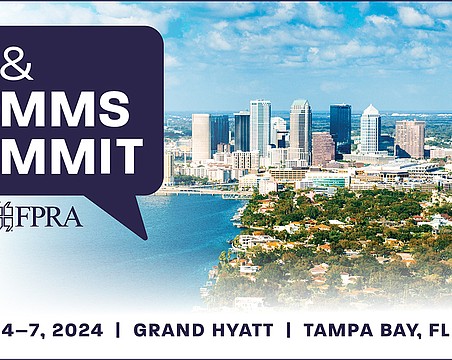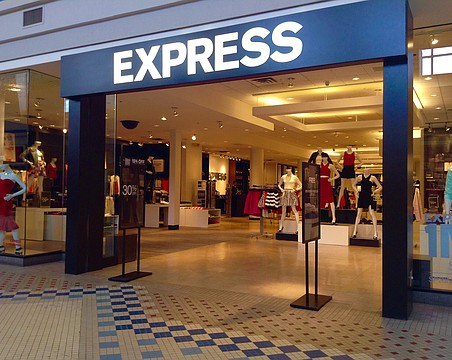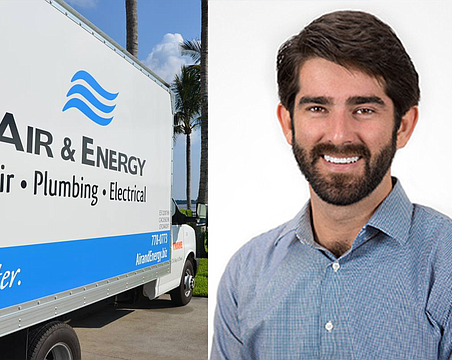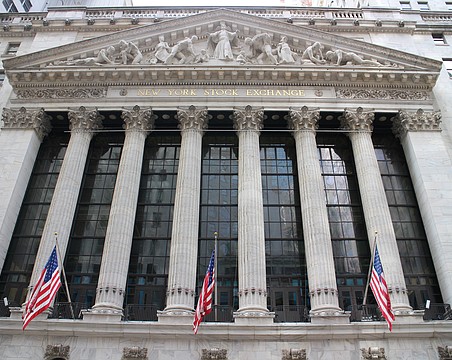BankEstate
BANKING TRENDS by Mark Gordon | Managing Editor
The old banker's refrain - they don't want to be in real estate - is dying as foreclosures
multiply across the Gulf Coast. Still, some banks are getting creative in solving the problem.
Stephen Price isn't having any fun on trips to the Zoomers Family Amusement Park.
Instead, the nearly completed ride-filled park on Summerlin Road near Fort Myers Beach has been more like a house of horrors for Price, president and chief executive officer of Immokalee-based Florida Community Bank.
As of June 5, the no-frills bank actually owns the $10 million-plus amusement park, part of a two-year foreclosure process that began when its owner defaulted on some loans.
Price says the bank has already begun seeking buyers for the property and if none are found in a few weeks, it will bring in a commercial real estate broker to move it. But overall, Zoomers stands as a picture-perfect example of the problems Gulf Coast community banks are facing as the real estate market slowdown lingers.
Indeed, Price is far from alone in that place bankers never want to be: Owning real estate stemming from loans gone bad and foreclosures. "We're not in the real estate business and we don't want to be," says Stephen Gilhooly, executive vice president and chief financial officer of Naples-based TIB Financial Corp, parent of TIB Bank.
The list of foreclosed holdings on the books of Gulf Coast community banks is long and diverse, past the occasional amusement park. It includes hotels and motels, commercial developments, large land plots, condos and single-family homes. And as these banks approach the second run of 2008 earnings reports, the increases in real estate-owned property stemming from foreclosures on the balance sheets is sticking out like grandmas on roller coasters.
For example, seven of the top 20 banks on the Gulf Coast by assets reported an increase of at least 120% in the amount of "other real estate owned" property on its books year-over-year from March 31, 2007, to March 31, 2008, according to Federal Deposit Insurance Corp. data. The category is primarily foreclosed properties.
Four of those banks had increases of at least 775% and two institutions - Fort Myers-based IronStone Bank and St. Petersburg-based Synovus Bank - topped 1,000% in increases. (See related chart.)
Meanwhile, nearly half - nine - of the top 20 went from a flat zero in owning other real estate in 2007 to having some positive figure in 2008.
Out of those institutions, Naples-based TIB Bank had the biggest debut, reporting $4.1 million in "other real estate owned" property as of March 31, according to FDIC reports. TIB is joined by a geographical diverse bunch of banks, from Brandon-based Platinum Bank ($775,000 in 2008) to Sarasota-based First State Bank ($287,000 in 2008) to Fort Myers-based Florida Gulf Bank ($255,000 in 2008). The Gulf Coast's largest bank, St. Petersburg-based Raymond James, went from zero in 2007 to $1.78 million in 2008.
But while the percentage gains in "other real estate owned" property for some of the Gulf Coast's biggest banks might be high, the actual dollar amount for many of these institutions is still relatively low, in some cases representing the equivalent of one or two homes or a singular commercial development. Plus, for a bank as large as Raymond James, which has $8.3 billion in assets and a loan loss allowance of $70 million as of March 31, according to the FDIC, $1.78 in foreclosures is modest.
The concern shared by bankers, analysts and industry regulators is that those numbers are primed to grow much more in the second half of 2008, as the courts sort through a wave of foreclosures. "I would expect most banks to have much more [foreclosures] in the second and third quarters," says Tom Quale, president and chief executive officer of Sarasota-based Landmark Bank.
And even more telling: Only two out of the top 20 banks reported a decrease in "other real estate owned" portfolios on the books over the past year: The Gulf Coast's second largest bank in assets, Naples-based Orion Bank, reported a 22% drop in that figure, from $14.40 million to $11.17 million, according to the FDIC. Englewood-based Peninsula Bank reported a 3% drop, from $4.05 million to $3.93 million.
Says Price, summing up the thoughts of dozens of Gulf Coast bankers: "We will be able to weather this, but it will be a real tough year."
No white flags
Banks are taking a variety of approaches to weathering the increase in foreclosure-based real estate owned properties. And the success, even on a short-term basis, of Orion Bank and Peninsula Bank can only bolster bankers' hopes.
Orion executives, however, are somewhat coy when talking about how they have been able to do it. "Going into this cycle, our CEO made the decision we we're not going to be knee-jerk about it," says Dave Pearson, a senior vice president with the bank, referring to Jerry Williams, the bank's well-known chairman, president and CEO.
Instead, says Pearson, the bank and its top executives have been working diligently with both its borrowers and potential buyers of the foreclosed properties to find deals that minimize the bank's losses.
Two factors have been a big plus: One, the bank's original underwriting and terms of its loans were strong and had the right balance of loan to value, eliminating many hassles and holdups in the resale process. And two, Pearson says the bank's selection of developers and properties it worked with during the boom was "excellent," so the bank has options now that the market has turned sour.
Peninsula Bank executives declined to comment on their strategy or approach to selling the foreclosed real estate on its books. And while most of the other Gulf Coast banks haven't had the same success, it's not for lack of trying.
For example, Cape Coral-based Riverside Bank of the Gulf Coast set up a Web site a few months ago, www.myownriversidehome.com, to exclusively sell its foreclosed properties in areas such as Lehigh Acres and Bonita Springs. It even recently started listing homes on the site that are not in foreclosure yet, but are likely to be soon. "We have to try to stay as high-tech and high exposure as we can," says Elmer Tabor, Riverside's board chairman.
Tabor is also a Realtor who runs Cape Coral-based Wonderland Realty, which he hopes will be an advantage as the bank tries to sell off its foreclosed properties. The numbers in that department have gown 795% for the bank from March 2007 to this past March, from $565,000 to $5.05 million.
In addition to its Web site, which includes partnerships with about 20 Fort Myers-area Realtors, Tabor is leading a change in management at the top of the bank. The board recently fired long-time president and CEO John Moran and is seeking a permanent replacement.
Meanwhile, Sarasota-based Century Bank has taken the unusual step of hiring both an in-house property manager and a real estate appraiser to handle the properties on its books. "We've never had a need for something like this in the eight years I've been here," says John O'Neill, the Review's Banker of the Year in 2004. "It's a sign of the times."
Century's 197% rise in its foreclosure-based "other real estate owned" portfolio from 2007 to 2008 is sharp, but not as high as a few other banks. O'Neil says the portfolio, which went from $2.13 million as of March 31, 2007 to $6.27 million as of March 31, 2008, is made up mostly of three commercial properties and a dozen or so residential holdings in and around Sarasota.
The appraiser and manager are there to see what properties need basic clean-ups and which ones need overhauls. They are also there to sell or in some cases rent the properties at prices that meet the bank's acceptable losses formula. Says O'Neill: "We are not going to let them go at fire sale prices."
A banker's friend
For O'Neill and a few other bankers trying to navigate through the problems, there is a silver lining. It's a banker's best friend at times like these: Being well capitalized.
"That's your best medicine for riding through this cycle," says Synovus Bank of Tampa Bay CEO David Dunbar. "We are blessed to have that."
Dunbar is referring to Synovus' Columbus, Ga.-based parent, Synovus Financial Corp. He says the bank is one of the top five capitalized financial institutions in the Southeast. And the bank just might need to dip into that pool, as its 1,446% year-over-year increase in its "other real estate owned" portfolio is the highest percentage gain of the top 20 Gulf Coast community banks.
Dunbar says that number is somewhat skewed, as it includes the entire portfolio of Naples-based First Florida Bank, which Synovus bought in 2006 and closed on in late April. Still, no matter the source of the increase, it can be a drag on the bank and Dunbar is looking to get into decrease mode, fast.
Synovus' strategy, on the properties it owns from St. Petersburg to Naples, is uncomfortably simple considering how much bankers loathe being in the real estate business.
"When we get a piece of property back [from a foreclosure] we list it for sale with Realtors in the market and try to sell it like everybody else," says Dunbar. "There is no real magic bullet to it."
BANK-OWNED PROPERTIES RISE
The following chart lists the amount of other real estate-owned property on the books of the Gulf Coast's 20 largest community banks by assets as of March 31. The 'other real estate owned' figure, charted by the Federal Deposit Insurance Corp., is made up mostly of foreclosures, with a few including real estate investments. Some banks reported large year-over-year increases, while others on the list had no foreclosures to report in 2007 and some this year. Still others have a relatively small number of other real estate owned on the books, which some banking experts and bankers say will increase in second and third quarter earnings, which FDIC reports later this year. (Dollars in thousands)
Institution Name City 3/31/07 3/31/08 Chg. %
Synovus Bank* St. Petersburg 426 6,587 1446%
IronStone Bank Fort Myers 162 1,999 1134%
Riverside Bank of the Gulf Coast** Cape Coral 565 5,055 795%
Freedom Bank Bradenton 432 3,794 778%
Busey Bank NA Fort Myers 419 1,567 274%
Century Bank** Sarasota 2,113 6,274 197%
Florida Community Bank Immokalee 2,790 6,145 120%
First Community Bank of America St. Petersburg 368 538 46%
Peninsula Bank Englewood 4,051 3,932 -3%
Orion Bank Naples 14,406 11,171 -22%
TIB Bank Naples 0 4,182 N/A
The Bank of Commerce Sarasota 0 2,430 N/A
Raymond James Bank FSB St. Petersburg 0 1,785 N/A
First Priority Bank Bradenton 0 1,609 N/A
Platinum Bank** Brandon 0 775 N/A
First State Bank Sarasota 0 287 N/A
Florida Gulf Bank Fort Myers 0 255 N/A
Centerstate Bank NA Zephyrhills 0 233 N/A
Bank of Florida - Southwest Naples 0 98 N/A
The Bank of Tampa Tampa 0 0 N/A
Note: Other real estate owned properties refers primarily to foreclosures, with a real estate investments for some banks.
*/Figures reflect purchase of Naples-based First Florida Bank
**/S-Corp.
REVIEW SUMMARY
Business. Gulf Coast community banks
Industry. Banking
Trend. Some of largest banks on the Gulf Coast have seen dramatic rises in the amount of foreclosure properties on the books.





